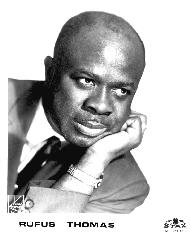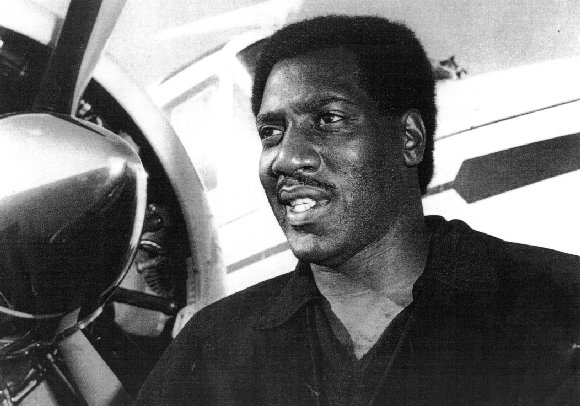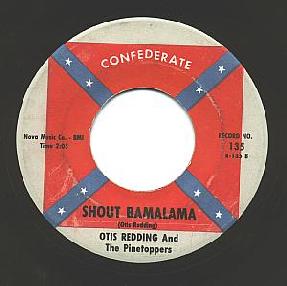http://homepages.rootsweb.com/~cmamcrk4/hb4to5.html
CREEK AGENCY, May 25, 1812.
I was this day informed by Mr. Cornells, our interpreter for the Upper Creeks, that on the 23rd inst. a white man, William Lott, was murdered, eight miles this way from his home, by four Indians without the least provocation. * * * The chiefs will meet in one week and we shall see what can be done. We have a report also that two families have been killed in Tennessee.
CREEK AGENCY, July 28, 1812.
I have just time to inform you that the Indian who murdered Meredith was put to death on the 19th.
CREEK AGENCY Aug. 24, 1812.
Those charged with the murder on Duck River are not yet come at.
This massacre of the Tennessee families on Duck River and the treatment of Mrs. Crawley and children, aroused strong feelings against the Creeks among the people of Tennessee. The reader will find, when he comes to the treaty of peace, at the close of the war, that Duck River was charged up against the Creeks along with Fort Mims.
CREEK WAR OF 1813 AND 1814
http://160.36.208.47/FMPro?-db=tnencyc&-format=tdetail.htm&-lay=web&entryid=C163&-find=
The hard-fought Creek War of 1813 and 1814, also known as the First Creek War, actually began in the spring of 1812, when a party of Creek warriors returning from a visit to the British in Canada attacked a small white settlement at the mouth of the Duck River. These warriors killed several people and took a captive, Mrs. Martha Crawley, south into the Creek country. The Creek Council, though, at the insistence of United States Agent Benjamin Hawkins, executed the warriors and their leader, Little Warrior, for their crimes. The executions sparked a long-simmering revolt by nativist Creeks. The nativists, known as Red Sticks, sought to wrest control of the Creek Nation from the council chiefs, whom they blamed for white encroachment on Creek territory and toleration of corrupting white influences on Indian life.
"Incident at Duck River:
The Impact of Indian Depredations
in the Public Memory of Early Tennessee."
by
Tom Kanon
Tennessee State Library and Archives
http://www.mtsu.edu/~lnelson/KanonPaper.htm
At an 1812 Fourth of July fete in Knoxville, Tennessee, the celebration concluded with a round of toasts appropriate to the occasion. In addition to the obligatory salutes to the Day of Independence, the President, and the Congress, one Knoxville politician, John Williams, offered this passionate toast:
A speedy restoration of the unfortunate Mrs. Crawley (now a prisoner with the Creek Indians) to her family and friends, under a demand made by the government for her release--but if not so released in reasonable time may the people look to it without loss of time, and not only obtain her, but punish the offenders who committed the massacre at or near the mouth of Duck River.[1]
Black Warrior's Town
One-half mile north was the Creek Indian village known as Black Warrior's Town, of which Oce-Oche-Motla was chief. After Tecumseh's visit in 1811, these Indians became hostile to white settlers. In 1812 Little Warrior brought Mrs. Martha C. Crawley of Tennessee to this Indian Village as a captive. She was rescued by Tandy Walker, a blacksmith, and taken to St. Stephens. This was one of the incidents which led to the Creek War. The village was destroyed in October 1813 by Colonel John Coffee and his Tennessee Volunteers, one of whom was Davy Crockett.
Feb. 1813: Josiah Francis made many prophets, and, among others,
High-Head Jim, of Auttose. The Indians began to dance "the war-dance
of the lakes," which Tecumseh had taught them. In the meantime, that
Chief had reached Canada, having carried with him the Little Warrior,
of the Creek nation, with thirty of his warriors. The British agents
sent back by them letters to their agents in Florida, with orders to
allow the Creeks extensive supplies of arms and ammunition. The Little
Warrior, in returning, by way of the mouth of the Ohio, attacked seven
families, living near each other, and murdered them in the most cruel
manner. They dragged Mrs. Crawley from the bodies of her bleeding
children, and brought her, a prisoner, to the Tuscaloosa Falls. Being
made acquainted with these outrages by General Robertson, the
Chickasaw agent, Hawkins, demanded the punishment of the guilty
warriors. Apr. 16: A council, at Tookabatcha, secretly despatched a
party of warriors, headed by McIntosh, of Coweta, who marched to the
Hickory Ground, where they separated into smaller parties. One of
these went to the Red Warrior's Bluff, upon the Tallapoosa, now Grey's
Ferry, and there surrounded a house, and began to shoot at five of the
Little Warrior's party. They defended themselves with bravery, all the
time dancing the dance of the lakes. Finally, they were all killed and
burnt up. A party, headed by Captain Isaacs, pursued the Little
Warrior into a swamp, above Wetumpka, and killed him. Others were
killed at Hoithlewaule. Although the Chiefs, friendly to the United
States, acted with so much justice upon this occasion, it did not
prevent the commission of other murders, more immediately at home.
HERE'S THE ILLINOIS VERSION OF THE FEBRUARY 1813 MASSACRE AT THE MOUTH OF THE OHIO:
The Mound City Massacre
Dr. N. R. CASEY
History of Pulaski County
CHICAGO (1883) — The earliest history of which we have any accurate account of the location where Mound City now stands dates back to 1812, that being the time of the Indian massacre, and as it tells of the life and fate of many early pioneers in Illinois, we give the history of the massacre, as told by Thomas Falker, and as written by the Rev. E. B. Olmsted, and published in the newspapers some years ago.
Thomas Falker, who died in Pulaski County in 1859, gave the facts of the massacre of the whites where Mound City now stands. The first white settlers of the extreme southern portion of Illinois were Tennesseans, but it is not generally known that they were driven here by an earthquake, which gave its first shake December 16, 1811. The present site of Cairo was then known as Bird's Point. Two families, one named Clark and the other Phillips, lived near where is now Mound City. A man named Conyer had settled below the old town, America, and a Mr. Lyerle, a short distance above, and a man named Humphrey lived where Lower Caledonia now stands. These were all the inhabitants of the country, from the mouth of the Ohio to Grand Chain - twenty miles.
They had made but small improvement, and as the land had not yet come into market, of course they did not own the soil. The families of Clark consisted of only himself and wife; their children were grown up and lived elsewhere, but paid them an occasional visit. The other family near Mound City, consisted of Mrs. Phillips and a son and daughter nearly grown and a man named Kenaday. The family originally were from Tennessee, and removed from that State into what is now Union County. Mr. Phillips having occasion to return to Tennessee, on business, Kenaday became acquainted with his wife and persuaded her to abandon Phillips and live with him. No disturbances followed this delinquency, and the easy morals of the times seems to have winked at it.
In the fall of 1812, these families were enjoying their usual quiet, when some Indians, ten in number, paid them an unexpected visit. They belonged to the Creek tribe, which inhabited the lower part of Kentucky, and had been exiled and outlawed for some supposed outrages committed on their own nation. They were known to the inhabitants of that country as "the outlawed Indians," and on the occasion of this unwelcome visit were returning from a tour of the northern part of the territory, where they had been to see some other tribes. On the same day, Mr. Phillips returned home, accompanied by a Mr. Shaver, who lived in Union County, and whose wife Mrs. Phillips had been attending in her sickness.
The cabin of Clark stood near the west boundary line of what is Mound City; that of Mrs. Phillips a short distance above, on the next elevation. Shaver stopped at Clark's and fastened his horse near the back door. When he saw the Indians, he expressed apprehension to Clark, but he told him he was acquainted with them, had traded with them, and did not suppose they had any bad intentions. Yet when Clark on one occasion went out to the smoke house Shaver saw by the pallor of his face that he was much alarmed. It was his opinion that Clark had seen or overheard through the openings of the house enough to satisfy him of the hostile intentions of the savages, but feared to speak of it lest Shaver should mount his horse and leave him to his fate. The Indians asked for something to eat. Mrs. Clark told them if they would grind some corn on the hand mill she would prepare them a meal. They did so and partook of the hospitality of a family they fully intended to butcher before night.
The Indians were armed with guns and tomahawks; one of them came to Shaver and felt the muscles of his thighs, his knees, etc., as though he wished to judge of his ability to run. "Do you wish to run a race?" said Shaver. "No." "Do you wish to wrestle?" "No." The situation of the white settlers were becoming more alarming. They hoped, after the Indians had eaten, they would take their departure, but they sauntered around as if unwilling to do so. It was Shaver's intention to carry home some whisky, but Clark was afraid to draw it while the Indians were there. At length, five of the Indians went up to Mrs. Phillips'; the other five remained at Clark's. Two of the latter took their station with apparent carelessness in the front door (next to the river), and two more stood near the fire-place, where sat Mr. and Mrs. Clark and Shaver. The latter happening to look at the Indians in the front door, saw one of them make a signal in the direction of Mrs. Phillips', which was in sight, by striking his hands together vertically several times.
Directly he heard screams and shouts in that direction, and the next instant received a stunning blow on his head from the hatchet of the Indian who stood near him. He fell forward, but being a powerful man, he dashed between the two Indians at the back door and ran for his horse, which, as said, was fastened near the back door. He soon saw, however, his retreat in that direction would be cut off, so he ran down to the river bank, with two of the Indians in full pursuit. They doubtless supposed, as Shaver was already wounded, he would fall an easy prey; but he was fleet of foot, and then he was running for his life. Blinded by the blood which poured down his face, and which he occasionally dashed away with his hand, he made for the bayou below the present Marine Ways. A hatchet just missed his head and fell many yards in front of him. His first impulse was to pick it up and defend himself, but a moment's reflection convinced him the chances were too much against him. It was a half a mile or so to the bayou; Shaver gained it in advance of the Indians. It was quite full and partially frozen over. He plunged in and gained the opposite shore. The Indians paused on the bank, afraid to follow. They told him he was brace, and endeavored to induce him to return. Tradition says he addressed some very strong language to the Indians and made his way to the Union County settlements. His escape, considering the circumstances, was wonderful. The Indians murdered Clark and his wife, Mrs. Phillips, her son and daughter and Kenaday. The ripped up the feather beds, destroyed the furniture and carried off whatever struck their fancy, including Shaver's fine horse. The crossed the river into Kentucky and were followed by the citizens of the settlement in Union County for some distance, but no trace of them could be found.
A few days after, Capt. Phillips, who was stationed at Fort Massac, came down with a company of men to bury the dead. A shocking sight met their gaze. Clark and his wife were found in their houses dead. The body of young William Phillips was found drifted ashore about a mile below Mound City. His sister was not found; one of her slippers was found on the bank of the river. It is supposed she and her brother got into a skiff and were shot down before they could get away. Kenaday was found some distance from the cabin of Mrs. Phillips. His shoulder and back much cut in gashes by the tomahawks of the savages. The body of Mrs. Phillips was found, and also the body of her unborn babe, impaled upon a stake.
Note: Although this story has the massacre taking place in the fall of 1812, contemporary sources date this massacre to February 9, 1813. On March 5, 1813, James Robertson, U.S. agent to the Chickasaws reported the following: "Seven families have been murdered near the mouth of the Ohio, and most cruelly mangled, shewing all the savage barbarity that could be invented. One woman cut open, a child taken out and stuck on a stake." The 10 Creeks had been led two chiefs, one of whom was Little Warrior. They were on their way back from negotiating a peace treaty with the Chickasaw when then attacked the families in Pulaski County.
Source: William Henry Perrin, ed. 1883. History of Alexander, Union and Pulaski Counties, Illinois. Chicago: O. L. Baskin & Co., Historical Publishers. 535-53. A footnote in the original states that Dr. N. R. Casey wrote Chapter 5 of his book from which this story is taken.










